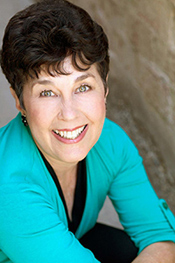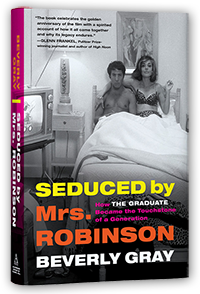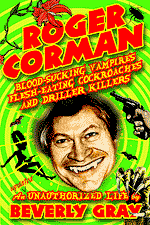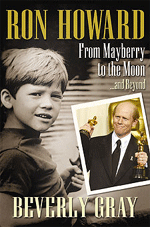A few weeks ago, my private Roger Corman alarm went off. More specifically, three different friends wrote to tell me about Roger Corman’s appearance in the “Talk of the Town” section of that bastion of east-coast culture, The New Yorker. Writer Tad Friend’s witty take on my former boss’s response to modern art is the clearest signal yet that the one-time schlockmeister is now considered a figure of cultural respectability. Friend is not above poking gentle fun at Corman’s B-movie output, though in most cases Roger himself beats him to it, e.g. in explaining that the key artistic principle behind his recent Syfy hit Sharktopus was “to build the head and jaws of the creature so that it squirts blood when it clamps on the pretty girl in the bikini.” (Roger’s wife and producing partner Julie Corman gets into the act too, explaining that “Roger’s been doing a lot of painting. Well, he does a lot of looking at his canvas and swearing.”)
The occasion for Friend’s artistic confab with the Cormans was their visit to a major “Ellsworth Kelly at Ninety” exhibition in New York’s trendy Chelsea. Friend reveals that Roger is passionate about Kelly’s color-field paintings, and that Julie gave him a Kelly original for his fiftieth birthday. Roger was presumably delighted by the painting: as he explains to Friend, “I loved the boldness of his colors and the flatness—that he was interested in surface, not depth.”
One of my aims in writing Roger Corman: An Unauthorized Biography of the Godfather of Indie Filmmaking (the best-seller that was renamed in paperback Roger Corman: Blood-Sucking Vampires, Flesh-Eating Cockroaches, and Driller Killers) has been to contrast the private man with his public persona. The public Roger Corman is a total charmer, and one who is by no means faking his intellectual pursuits. As Friend says, he is absolutely serious about contemporary art. He once chose to meet his sales-manager Robert Rehme for a business discussion in a gallery of New York’s Guggenheim Museum. And his eldest child Catherine, a successful author on fine-art subjects, makes clear that her own commitment to modern aesthetic forms stems from family vacations in the world’s great centers of culture.
But with Roger Corman there’s always an “on the other hand.” Those of us who’ve worked with Roger over the decades are well aware that his genuine love of contemporary art and architecture is delicately balanced by his passion for frugality. In the 1970s, having commissioned architect Cliff May to design him a sleek hilltop home, he was constantly asking the builders to cut corners. And when it came time to feather his new nest, it was not in his nature to pay top dollar. He hired Peter Jamison, the art director on 1974’s Big Bad Mama, to cover his walls with huge minimalist paintings, then trumpeted Jamison as a rising young artist. In his Brentwood office, meanwhile, he hung boldly-colored canvases done on the cheap by a UCLA grad student whose mandate was to imitate, yes, Ellsworth Kelly. True, Julie did indeed gift Roger with a genuine Kelly. I’ve been told by a Corman assistant from that era that Roger at first was furious at the expense involved. He cheered up considerably, though, when it appreciated in value.
A note from the Shameless Commerce division of Beverly in Movieland: I’m pleased to announce that my critically acclaimed biography is now available in a new edition that brings Roger Corman into the present day, detailing his recent success with monster mash-ups, his acceptance of an Honorary Oscar at a star-studded ceremony in 2009, and the lawsuit that has rocked his family to its foundations. Previously suppressed material has been restored, and this 3rd editionof Roger Corman: Blood-Sucking Vampires, Flesh-Eating Cockroaches, and Driller Killers is enhanced by an all-new photo section and an expanded appendix of famous alumni, as well as a cover image I suspect will give you a good chuckle.








I'm always intrigued by the duality in Mr. Corman. In this case his frugality really works against him, I wonder if he and Vincent Price had any lengthy discussions about fine art on the Poe pictures?
ReplyDeleteThat's an excellent question, Mr. C. I suspect not, though I'm certain Roger admired Price's reputation as an expert on high culture. In my new 3rd edition, there's a terrific photo of Roger and Price chatting while sharing a copy of a Japanese-language movie magazine. My guess is that this was a photographer's prop. No evidence that either of them knew the language, though they could doubtless respond to the beautiful photo of Audrey Hepburn on the cover.
ReplyDeleteI ran across that photo the other day perusing some of my old Fangoria magazines. I forget who it was being interviewed.
ReplyDeleteGlad to know that Fangoria was the source. I'd love to know more about this photo.
ReplyDelete